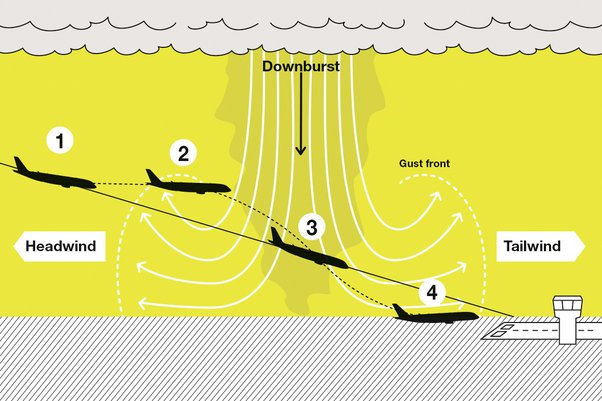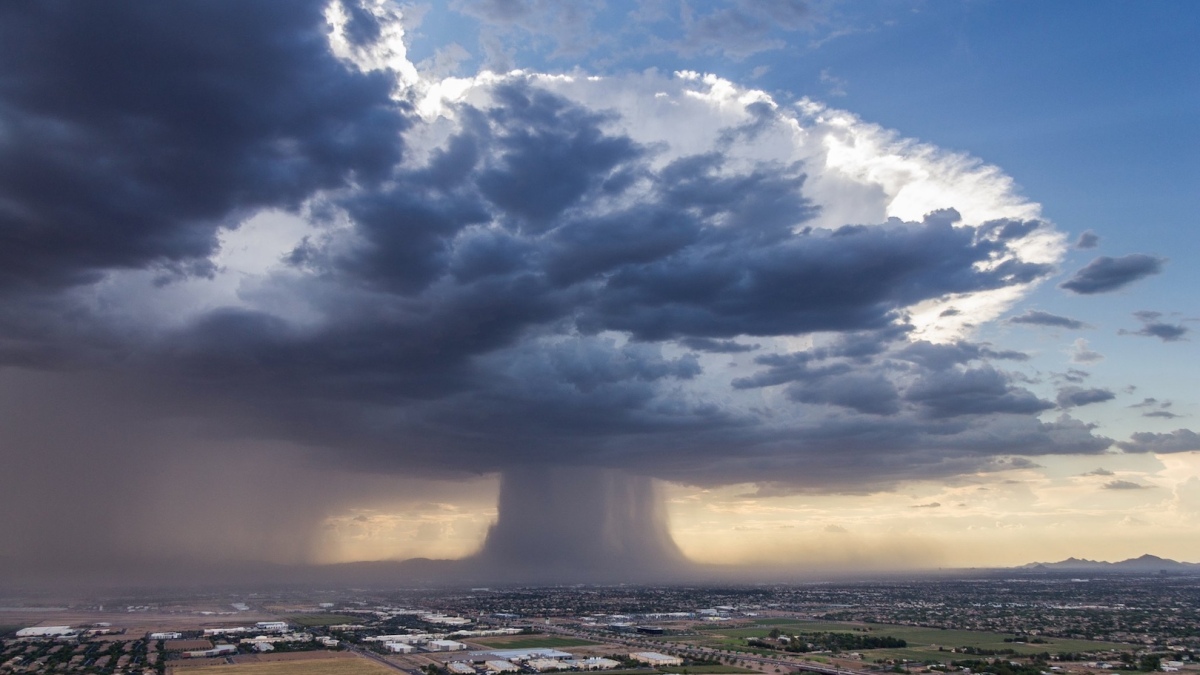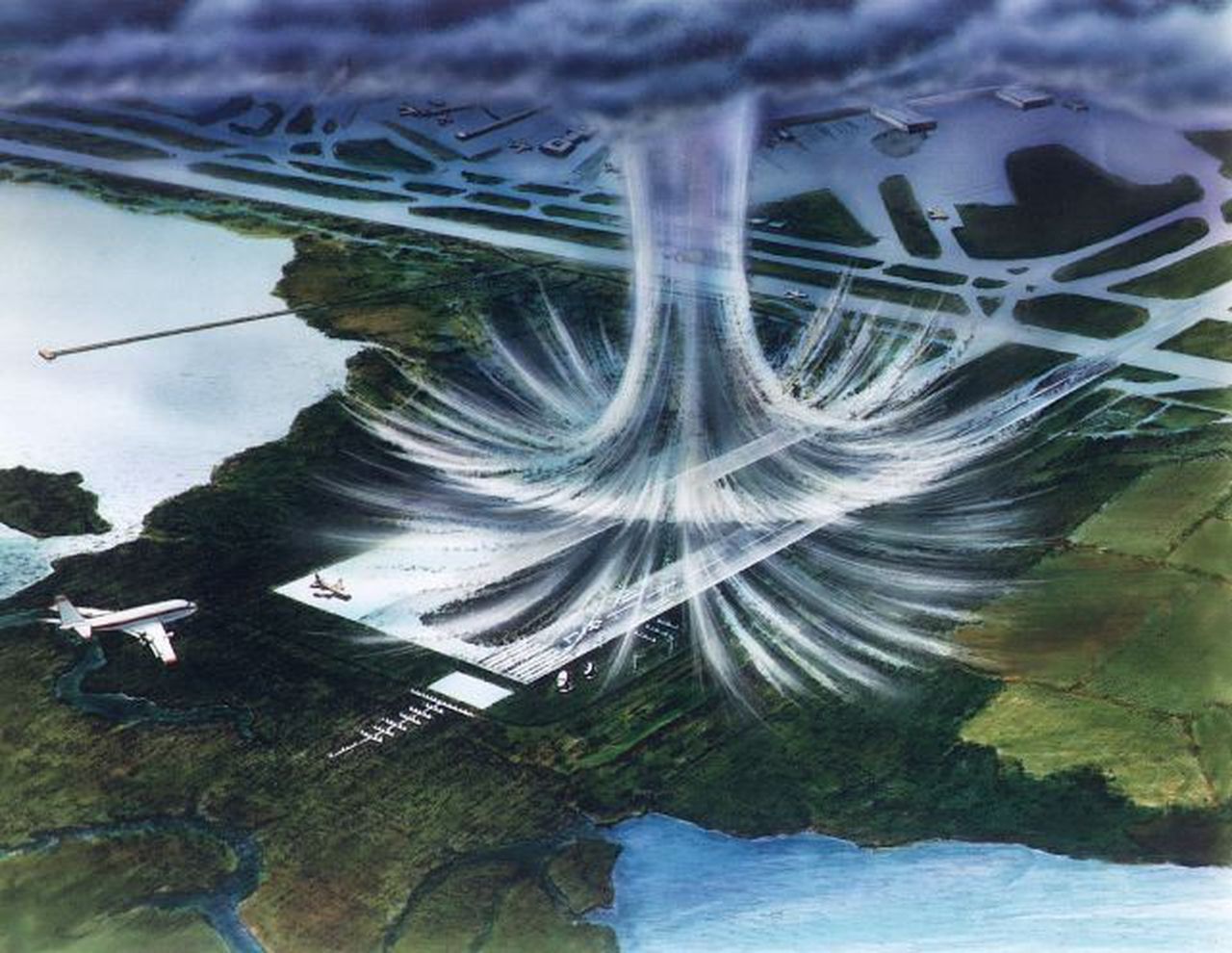Microbursts! These short-lived, intense downdrafts of air will try their best to wreck your takeoffs and landings completely. But how do they work? And how can we avoid them?
What are microbursts exactly?
Microbursts are atmospheric marvels characterised by sudden, powerful air downdrafts that spread horizontally when they reach the ground. They are often associated with severe thunderstorms, convective clouds, or other intense weather systems. These downdrafts can reach up to 130 knots, creating hazardous conditions for aircraft.

Double Danger
Microbursts pose a significant threat to aircraft. Two main reasons:
- The powerful downward airflow. This can cause an aircraft to lose altitude or rapidly experience significant changes in airspeed. No matter how much power your engines produce, you won’t out-climb these downdrafts!
- The horizontal outflow of air when the microburst reaches the ground. This is known as the “outflow boundary” and can create strong crosswinds that affect the aircraft’s handling and control. When pilots get caught in these crosswinds, they will likely struggle to maintain the desired flight path, increasing the risk of accidents. Remember, the strength of the microburst will probably mean that the aircraft cannot outperform it – even with a max rate of climb, you will be unable to get a positive performance of the plane (Aeromexico Flight 2431 is an example of what can happen if you try to fly through a microburst).
How do we avoid them?
- Weather checks! Stay informed about weather conditions. Modern weather forecasting tools, including onboard radar systems (such as PWS – Predictive Windshear System) and real-time weather updates (often relying on the tower or a ground observer), provide valuable insights into severe weather systems that may produce microbursts. Review weather reports and forecasts before each flight, and pay close attention to thunderstorm activity and associated weather patterns.
- More training! Pilots should receive solid training on recognising and responding to microbursts during their initial flight training and beyond. This training should include familiarising with microbursts’ visual cues, such as dark and ominous cloud formations, heavy precipitation, and sudden wind shifts. But you should also be trained in specific techniques for mitigating the effects of microbursts, such as proper recovery techniques and decision-making during critical flight phases.
- Talk to ATC! Maintaining open lines of communication with AT is vital in avoiding microbursts. ATC can provide pilots with up-to-date weather information and may offer alternate routes or hold patterns to prevent known or suspected microburst activity.
- Eyes like a hawk! During the flight, regularly check onboard weather radar systems, which can detect the presence of microbursts. If a potential microburst is seen somewhere, avoid the area: this might involve altering the course, requesting a change in altitude, or holding until the microburst dissipates. Remember that if you see Virga, there is a good chance that a microburst may form.
- Just avoid them! Obviously the best mitigation strategy! They will form quickly but dissipate quite quickly as well. Holding and waiting for a clear weather path is critical to a safe approach and landing.
A good rule of thumb to keep you safe when it comes to these beasts = 5nm for 5min. In other words, stay more than 5 miles away and wait at least 5 minutes from the last activity report.

More on the topic:
- More: SE Asia Monsoon Season: What Are LSWDs and Why Will They Cost You Fuel?
- More: What’s the delay in the USA?
- More: 2020: A Record Breaking Hurricane Season
- More: The mystery of the missing Russian Weather
- More: A different map: Winter Storm
More reading:
- Latest: More face scans at the US border: BizAv now included
- Latest: Mexico Customs Surprises: Pills, Vapes, and Laptop Rules
- Latest: Greenland NAT Alternates: Dec 2025 Update
- Safe Airspace: Risk Database
- Weekly Ops Bulletin: Subscribe
- Membership plans: Why join OPSGROUP?











 Get the famous weekly
Get the famous weekly 





